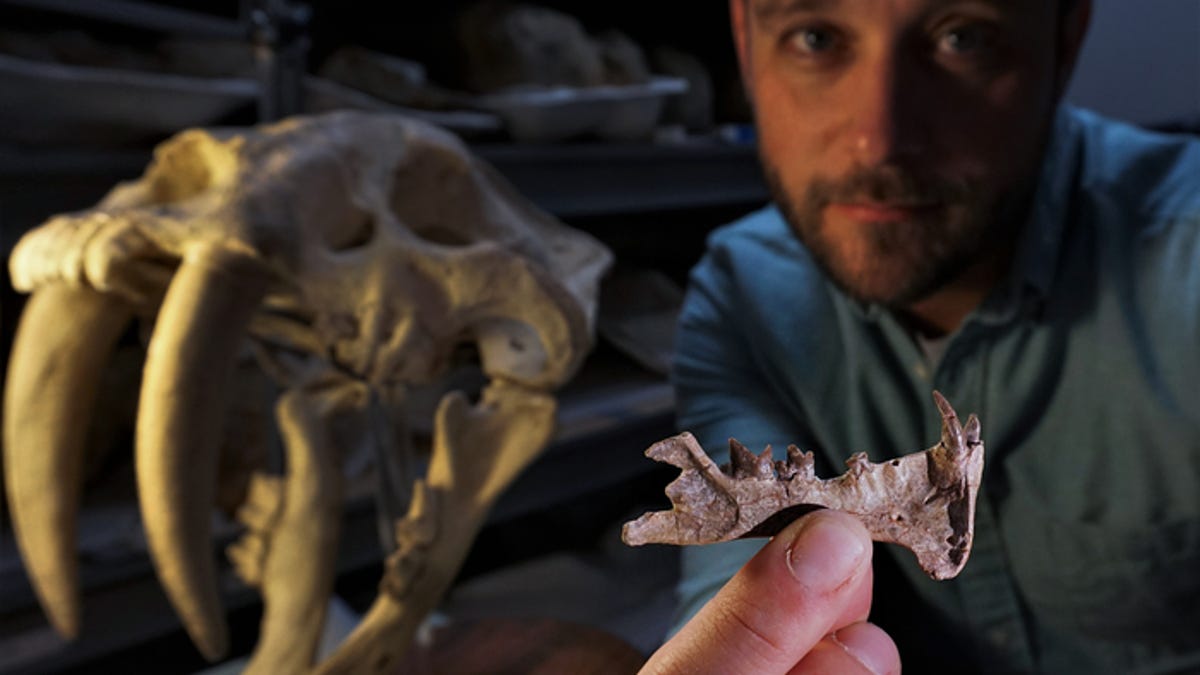Newly Discovered Sabre-Tooth Predator Is Millions of Years Older Than Tigers
The ancient predator belongs to a mysterious group of meat eaters called Machaeroidines.

Ashley Poust, a post-doctoral researcher at The Nat, holds a fossil of what's now the earliest known cat-like predator in North America west of the Rocky Mountains.
New analysis on a jawbone fossil has revealed a species of sabre-tooth predator that walked Earth millions of years before the first sabre-tooth tiger. Researchers named the new species of predator Diegoaelurus vanvalkenburghae and classified it as a Machaeroidine, a group of meat-eating mammals from the Eocene period from over 40 million years ago.
"We know so little about Machaeroidines, so every new discovery greatly expands our picture of them," said Dr. Shawn Zack of the University of Arizona College of Medicine, co-author of a research paper published Tuesday in PeerJ.
The fossil was originally discovered in 1988 by a 12-year-old boy in Oceanside, California, near San Diego. Since then, the jawbone has been stored in the massive fossil collection of the San Diego Natural History Museum. Researchers used 3D-modeling technology to confirm the fossil was a new species of Machaeroidine that was native to the California area millions of years ago.
"This relatively complete, well-preserved Diegoaelurus fossil is especially useful because the teeth let us infer the diet and start to understand how Machaeroidines are related to each other," Zack said.
Machaeroidines are the oldest known sabre-toothed mammalian carnivores. They have long been extinct, and scientists have very little information on them. There are just four or five known Machaeroidine species, and each one is represented by only a few specimens. Machaeroidines are an early example of the hypercarnivore, an animal with a diet of over 70% meat.
Today, hypercarnivores are common; polar bears and tigers are two well-known species. And if you have a pet cat, there's a hypercarnivore living with you in your home. If you want a closer look at the fossilized jaw bone, The Nat has a 3D model of the specimen you can check out here.

